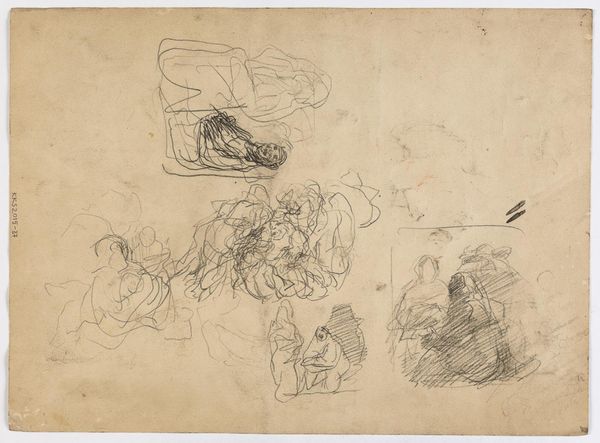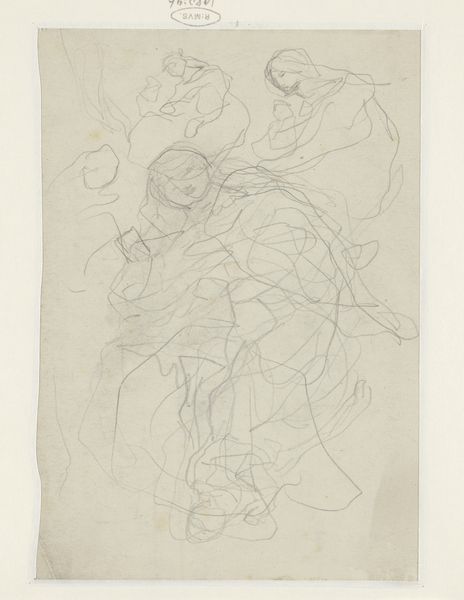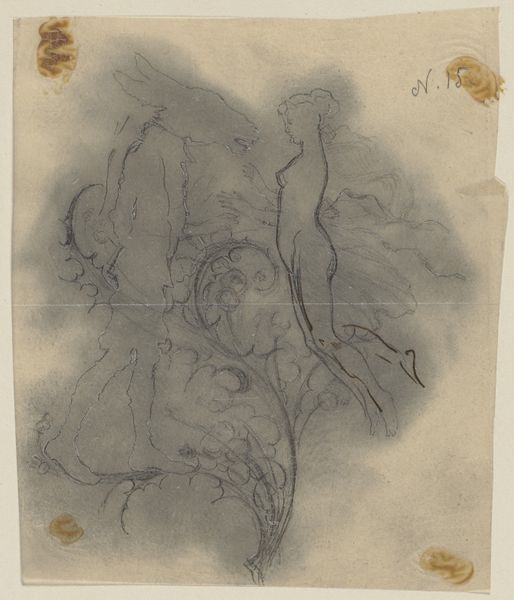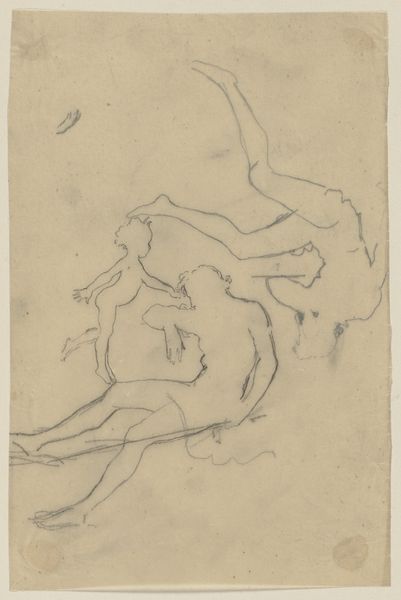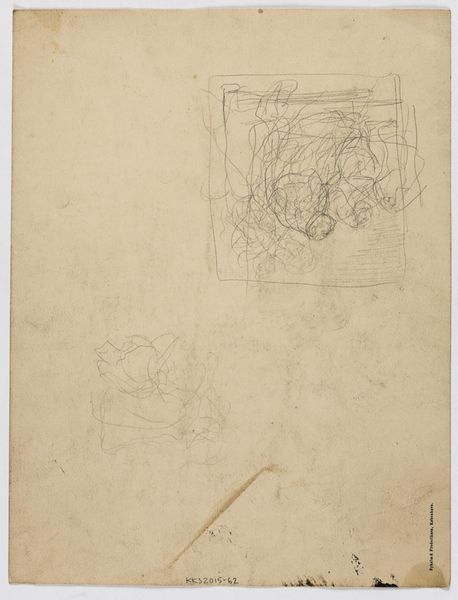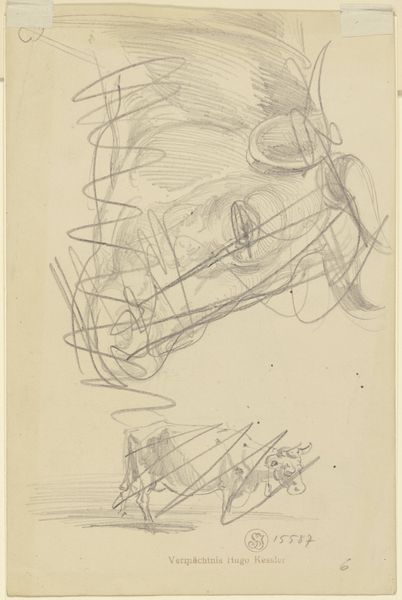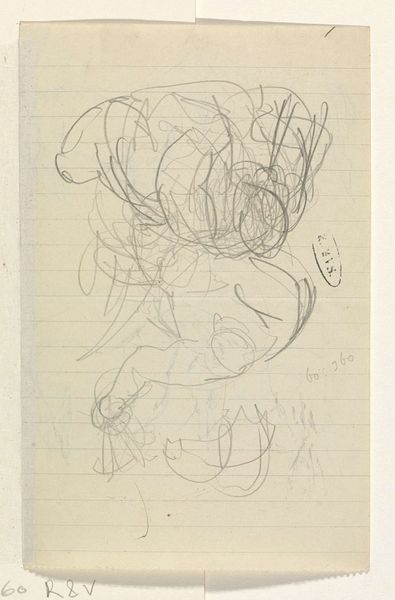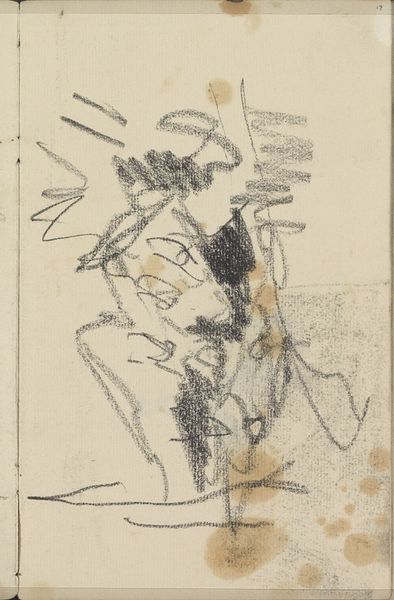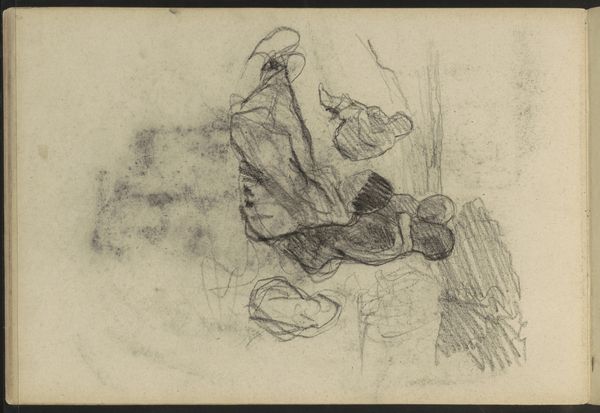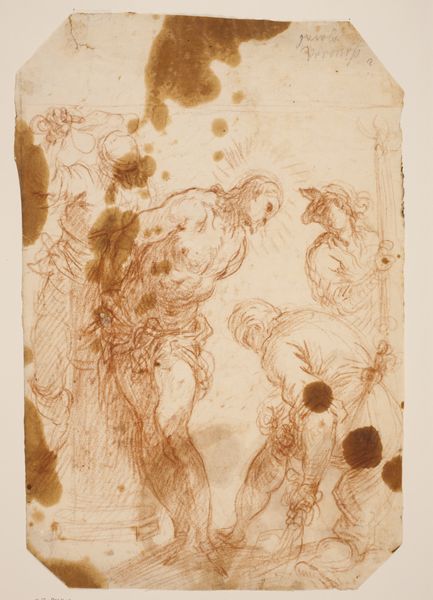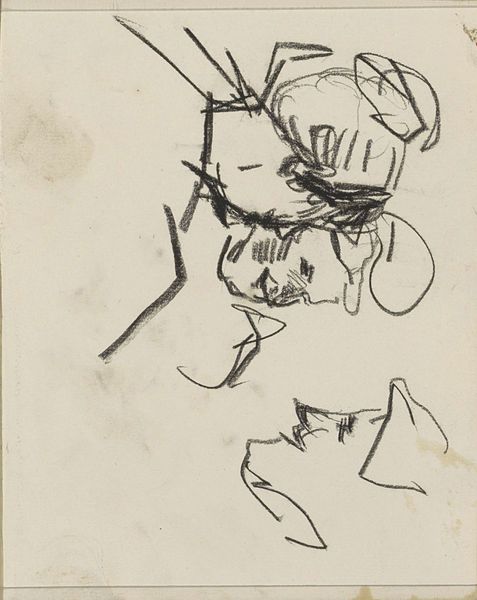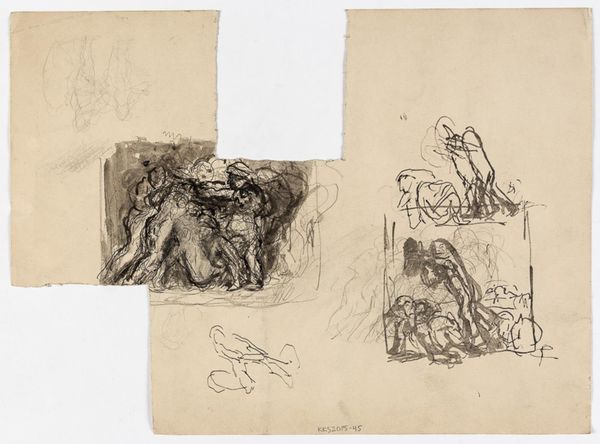
drawing, paper, monoprint, ink
#
drawing
#
ink painting
#
paper
#
monoprint
#
ink
#
abstraction
#
watercolor
Dimensions: 200 mm (height) x 254 mm (width) (bladmaal)
Editor: We're looking at Oluf Hartmann's "Løst Rids," made between 1879 and 1910. It's an ink drawing, almost a monoprint, on paper. It feels…fragmented. Like a fleeting thought, almost erased. What do you see in this piece? Curator: I see a critique of the established artistic conventions of the late 19th century. This piece disrupts traditional notions of representation, opting instead for abstraction, perhaps reflecting the social and political turbulence of the era. Do you notice how the 'lost sketch' suggests a departure from the polished, finished works favored by the Academy? Editor: Yes, definitely. It feels very raw and unfinished. But what about the ink blots and the seemingly random lines? Is that also a statement? Curator: Precisely! Consider the rise of industrialization and its impact on individual expression. The messy, almost chaotic lines can be interpreted as a response to the increasing mechanization of life, a rejection of rigid order in favor of a more spontaneous and authentic expression of the self. How does the artwork speak to your personal experiences with systems of power or control? Editor: I hadn't thought about it that way, but it makes sense. It’s like the artist is pushing back against the expectations of the time, not just artistically, but maybe even socially. Curator: Exactly. It becomes a powerful statement about individual agency and resistance. Considering its lack of resolution, the piece demands more creative contribution from the viewer to feel resolved. Editor: I see it now. It is way more than just a sketch. It's a quiet rebellion. Curator: Agreed. These subversive marks open new frames of interpretation.
Comments
No comments
Be the first to comment and join the conversation on the ultimate creative platform.
